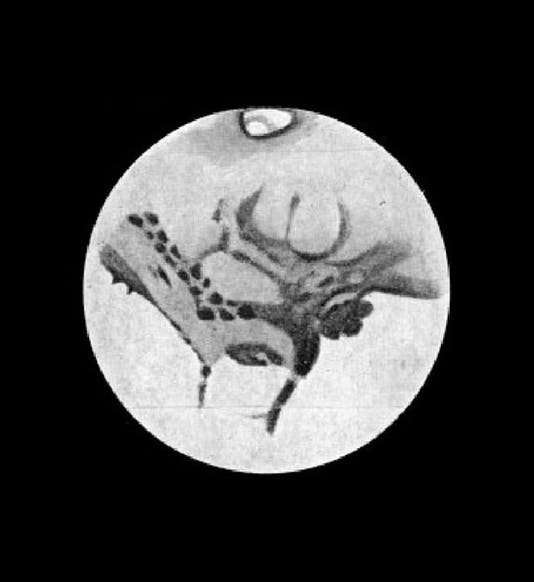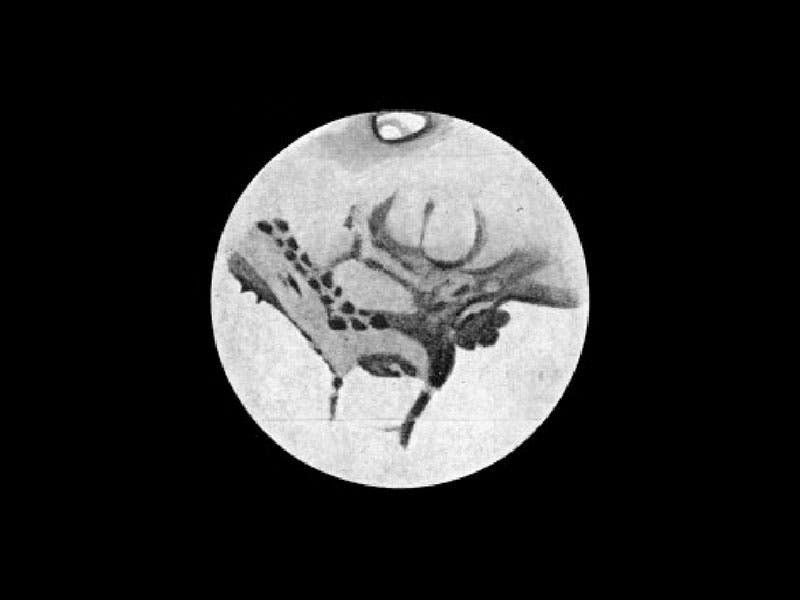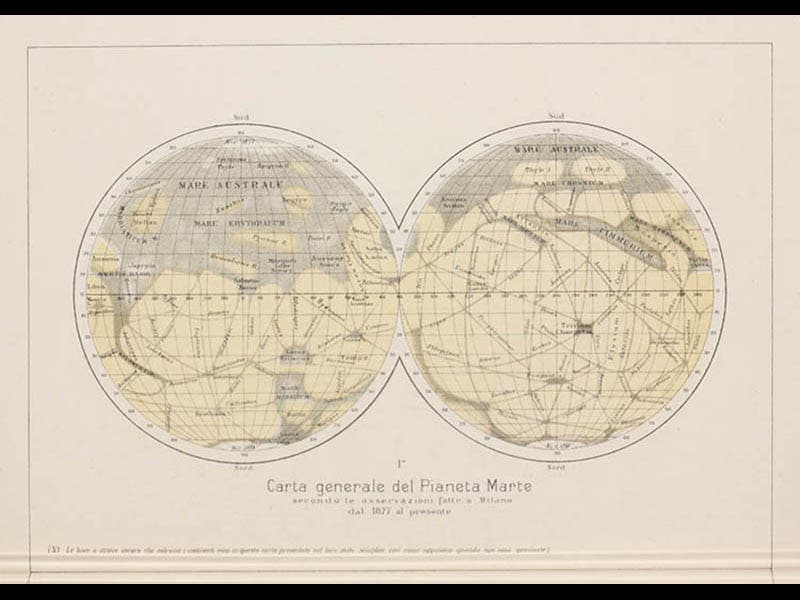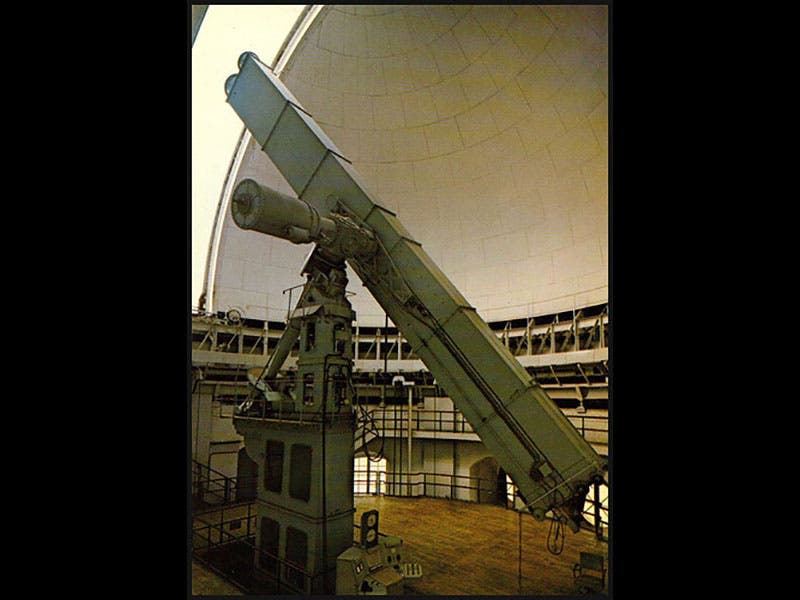Scientist of the Day - Eugène Michel Antoniadi

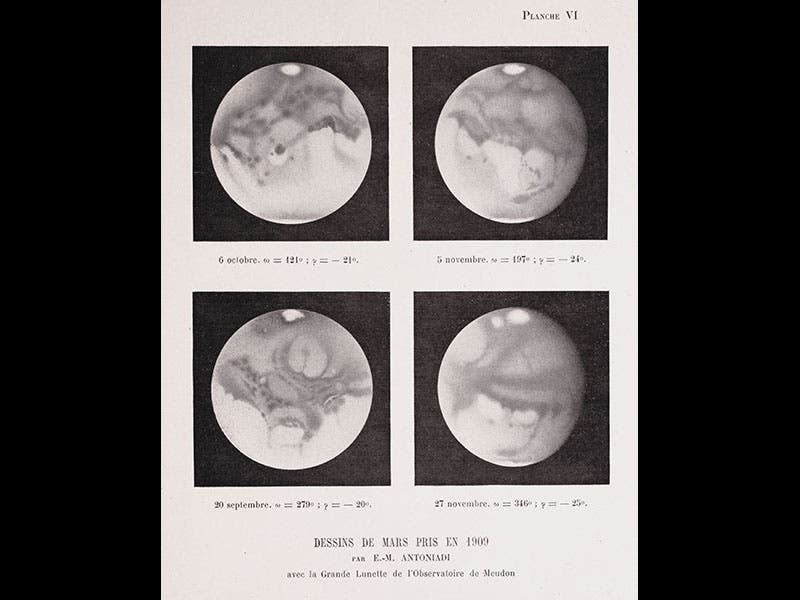
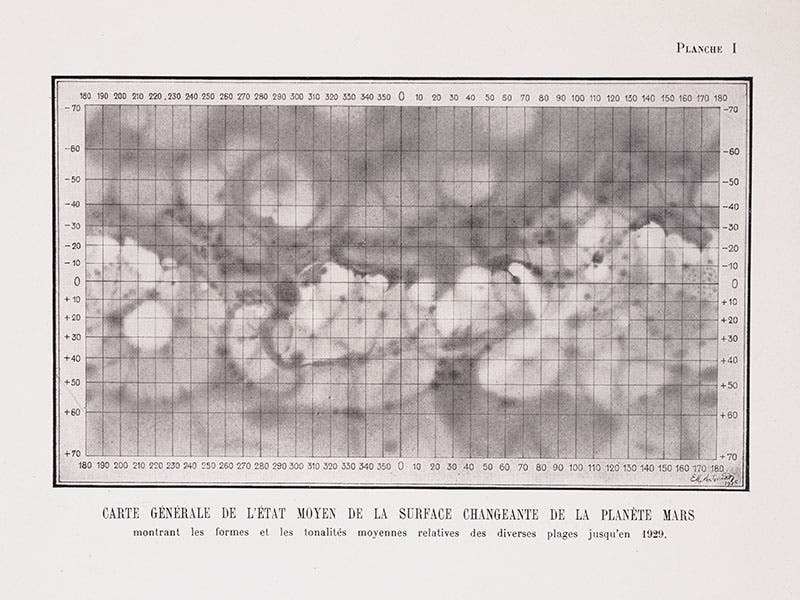
Eugène Michel Antoniadi, a Greek/French astronomer, was born Mar. 1, 1870. Antoniadi had many interests and excelled in most of them; he wrote (in Greek) the definitive book on the architecture of Istanbul’s beautiful basilica, Hagia Sophia, and played chess well enough to take two games from future U.S. national champion Frank Marshall in 1907. But primarily, Antoniadi was interested in Mars. In the 1890s, he was one of many who accepted Giovanni Schiaparelli’s discovery (and Percival Lowell's further attestations) that the surface of Mars is interlaced with canali (Schiaparelli) or canals (Lowell, and not quite the same thing as canali, which means "channels"). We see above a Schiaparelli Martian map in our collection, made in 1877 and published in 1891 (second image), which clearly shows an elaborate Martian canal system.
But in the early 1900s, Antoniadi began to do a turnabout, becoming convinced that Martian canals were an illusion, a psychological artifact of human perception. In 1909, he got the chance to use the great 33" refracting telescope at Meudon, on the outskirts of Paris (sixth image), and on the first night, Sep. 20, he saw Mars so clearly that he could not believe his eyes. It was covered with detail, but not a bit of it was geometric--there was not a canal in sight. He made several drawings of Martian features that night; we see one of those above (first image). Ironically, that first night was the best night of seeing he would ever have at Meudon, but it was enough to take him on the offensive against the reality of Martian canals. He would eventually publish a book, La planète Mars (1930), with numerous text images and 10 plates of Mars, one showing four more views from 1909 (fourth image), and another a world-map of Mars (fifth image), and you will find no canals anywhere in these views and maps. Nevertheless, it took another 40 years, and the Mariner voyages to Mars of the late 1960s, before Martian canals finally faded from maps, and from the human imagination.
Dr. William B. Ashworth, Jr., Consultant for the History of Science, Linda Hall Library and Associate Professor, Department of History, University of Missouri-Kansas City

